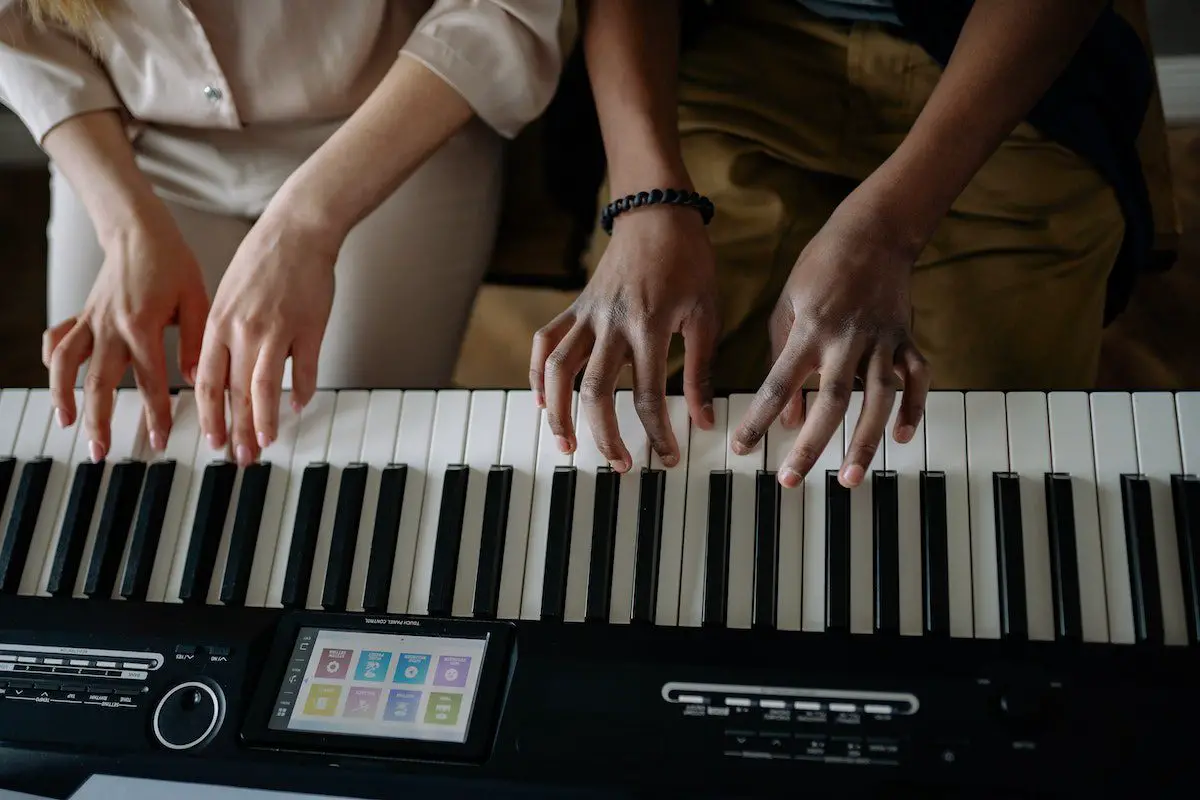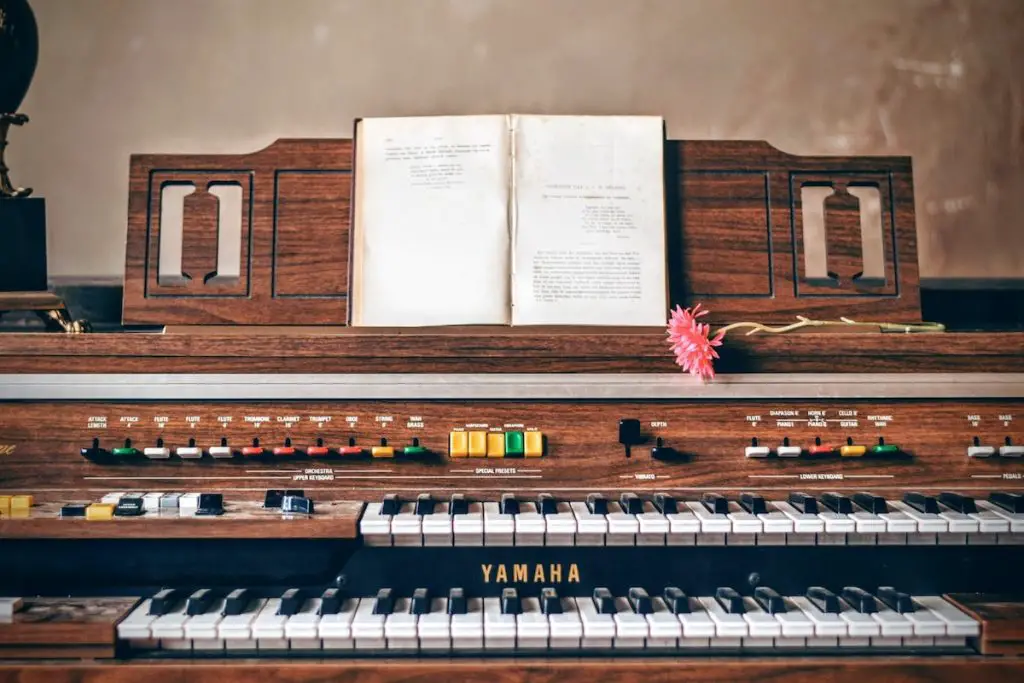Picture this: you’re wandering through a centuries-old cathedral, and suddenly, the air is filled with a powerful, rich sound that seems to vibrate in your very bones. The source? A majestic organ, producing a melody that echoes through the hallowed halls. What exactly is an organ instrument? And how does it create such a spellbinding sonic experience? Let’s explore the world of organs, their history, types, and their role in various music genres to find out.
What is an organ instrument? An organ instrument is a musical instrument that produces sound by using a series of pipes or electronic circuits to create tones of varying pitch and timbre. It is commonly played using a keyboard and is known for its rich and distinctive sound.
What is the organ instrument?
An organ instrument is a musical instrument that creates captivating sounds by pushing air through a series of pipes. This versatile instrument has been a cornerstone of music history, playing a pivotal role in the evolution of many genres, from classical to gospel and even rock!

One of the most famous and recognizable organ pieces is J.S. Bach’s “Toccata and Fugue in D minor.” This composition showcases the organ’s astounding range of dynamics, tonal colors, and ability to evoke powerful emotions. Without the organ, we wouldn’t have masterpieces like this that continue to inspire and influence musicians across generations.
AKAI Professional MPK Mini MK3

AKAI Professional MPK Mini MK3
How does an organ work?
To truly appreciate the organ’s musical prowess, it’s essential to understand its inner workings and the components that make it tick. Let’s break down its key components:
- Keyboard(s): Organs typically have one or more keyboards, called “manuals,” played with the hands, and a pedalboard, played with the feet. These keyboards allow the organist to control the airflow through different pipes, producing a wide range of notes and timbres.
- Stops: These are the control knobs or switches that the organist uses to select specific ranks of pipes, essentially choosing the “voice” of the organ. The more stops an organ has, the greater its tonal versatility.
- Pipes: The organ’s pipes are the heart and soul of the instrument, responsible for producing its distinct sound. Organ pipes come in various shapes, sizes, and materials, which all contribute to the organ’s unique timbre.
- Wind System: This system, which includes bellows or blowers, generates the air pressure required to drive air through the pipes, creating sound.
When an organist plays a note on the keyboard while pulling a specific stop, the wind system sends air into the corresponding pipe, producing the desired pitch and tone. This intricate process allows the organist to create a rich tapestry of sounds that can fill an entire space with music.
What are the different types of organ instruments?
While the general concept of an organ instrument remains consistent, there are several distinct types, each with its own unique characteristics and applications. Let’s take a closer look at some of the most common types of organs you might encounter:

- Pipe Organ: This is the classic and most well-known type of organ, often found in churches, cathedrals, and concert halls. Pipe organs come in various sizes, from small chamber organs to massive installations with thousands of pipes. They produce sound by channeling air through meticulously crafted pipes, resulting in a rich and powerful tone.
- Electronic Organ: First introduced in the 20th century, electronic organs replicate the sound of pipe organs using electronic circuits and amplifiers. Popularized by brands like Hammond and Wurlitzer, these organs have been a staple in genres like jazz, gospel, and rock music. Notable example: the legendary Hammond B3 organ.
- Digital Organ: A more recent innovation, digital organs use digital samples and sophisticated software to recreate the sound of pipe organs. They often include features like MIDI compatibility and multiple voicings, making them a versatile choice for musicians.
- Reed Organ: Also known as pump organs or harmoniums, reed organs produce sound by channeling air over metal reeds. These instruments, popular in the 19th and early 20th centuries, are often smaller and more portable than pipe organs and have a distinctive, warm tone.
- Theater Organ: Designed specifically for accompanying silent films, theater organs boast an array of sound effects and orchestral voices, allowing organists to create a full cinematic soundscape. The most famous theater organ is the “Mighty Wurlitzer.”
How has the organ evolved throughout history?
The organ instrument has a rich and fascinating history. Its origins can be traced back to the 3rd century BCE in ancient Greece with the “hydraulis,” which used water pressure to create sound. Over time, the organ found its way into European churches, undergoing advancements such as the introduction of bellows and additional keyboards.
During the Renaissance, renowned composers showcased the organ’s capabilities, leading to larger and more ornate instruments.
During the Renaissance, renowned composers showcased the organ’s capabilities, leading to larger and more ornate instruments. The 19th century brought further innovations, including pneumatic devices and the symphonic organ, which aimed to replicate the sound of an entire orchestra.
The advent of electronic and digital technologies revolutionized the organ world, giving birth to electronic and digital organs, as well as innovations like MIDI compatibility. Today, organs continue to be a fixture in various music genres and performance settings, from traditional churches and concert halls to modern music studios and live performances.
If you want even more tips and insights, watch this video called “How does a pipe organ actually work? | Anna Lapwood” from the Classic FM YouTube channel.
Frequently asked questions (FAQ)
Do you still have questions about an organ instrument? Below are some of the most commonly asked questions.
Can the sound of an organ be controlled while playing?
Yes, organs have various controls to shape the sound during performance. This includes stops, which enable the organist to select different sets of pipes or sound combinations, affecting the tone color. Additionally, expression pedals or swell pedals allow the organist to control the volume and dynamics by adjusting the airflow to the pipes or the electronic sound generation.
Will I be able to play the organ if I know how to play the piano?
While the piano and organ share some similarities, they are quite different instruments. Learning to play the organ requires mastering additional skills, such as coordinating multiple keyboards and a pedalboard, and understanding how to use stops effectively. That said, a background in piano can provide a solid foundation for learning the organ.
What is the difference between a pipe organ and an electronic organ?
The main difference between a pipe organ and an electronic organ lies in how they produce sound. Pipe organs use air pushed through pipes to create sound, while electronic organs rely on electronic circuits and amplifiers to replicate the sound of pipe organs. Electronic organs are often more portable and versatile than pipe organs but may lack the rich, authentic sound of a pipe organ.
Conclusion
Well, folks, that’s the lowdown on the organ instrument! We’ve organ-ically explored the instrument’s history, types, and components, and I hope this article has struck a chord with you. Did I cover everything you wanted to know? Let me know in the comments section below. I read and reply to every comment. If you found this article helpful, share it with a friend, and check out my full blog for more tips and tricks on music production. Thanks for reading, and remember to keep those creative juices flowing!
Key Takeaways
This article covered the organ instrument and its significance in the world of music. Here are some key takeaways:
- The organ is a versatile instrument that uses air pushed through pipes to create sound, and it has played a pivotal role in music history.
- Organs have several key components: keyboards, stops, pipes, and a wind system.
- There are different types of organ instruments, including pipe organs, electronic organs, digital organs, reed organs, and theater organs.
- The organ has evolved significantly throughout history, with various innovations and adaptations contributing to its enduring presence in music.















